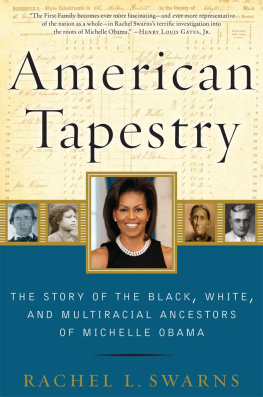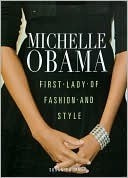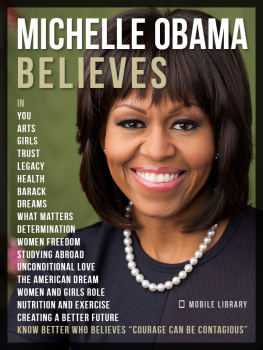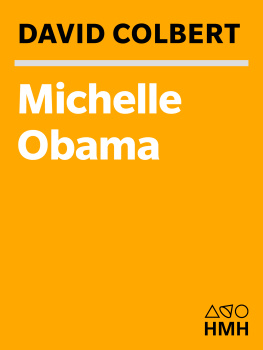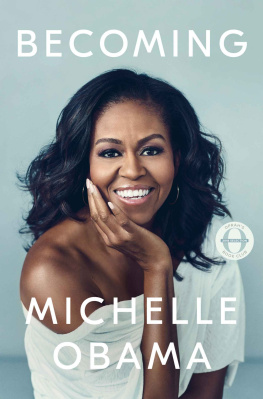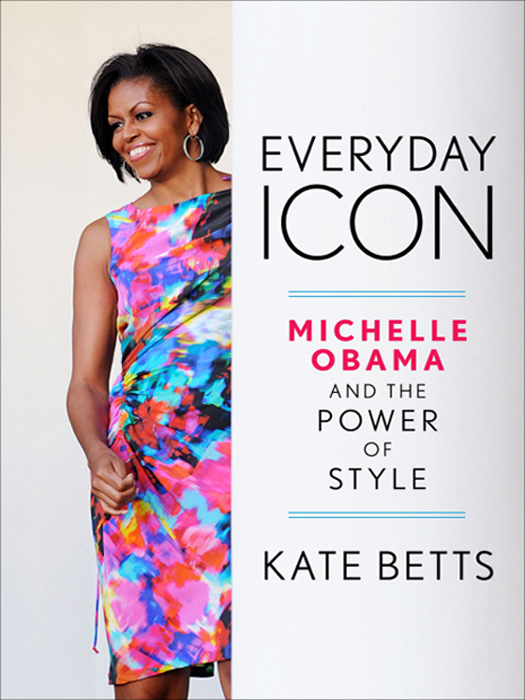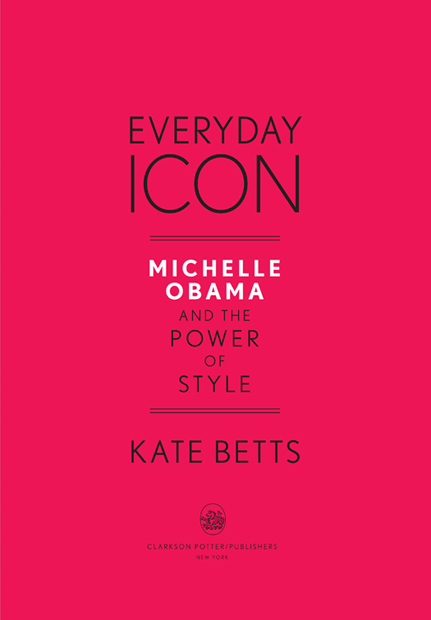Copyright 2011 by Kate Betts
All rights reserved.
Published in the United States by Clarkson Potter/Publishers, an imprint of the Crown Publishing Group, a division of Random House, Inc., New York.
www.crownpublishing.com
www.clarksonpotter.com
CLARKSON POTTER is a trademark and POTTER with colophon is a
registered trademark of Random House, Inc.
Cover photograph: Olivier Douliery/Getty Images
Library of Congress Cataloging-in-Publication Data
Betts, Kate.
Everyday Icon: Michelle Obama and the power of style / Kate Betts.1st ed.
p. cm.
1. Clothing and dressUnited States. 2. FashionUnited States. 3. Womens clothingUnited States. 4. Popular cultureUnited States. 5. Obama, Michelle, 1964Clothing. 6. Presidents spousesClothingUnited States. I. Title.
GT615.B48 2011
973.932092dc22 2010008895
eISBN: 978-0-307-95266-0
v3.1
For my mother,
Glynne Robinson Betts
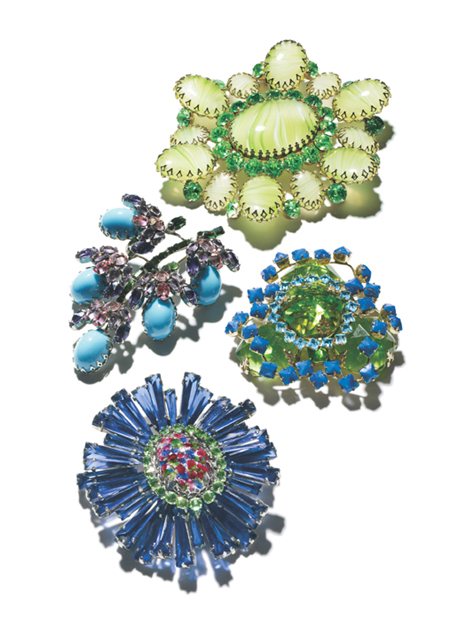
CONTENTS
INTRODUCTION
THIS BOOK IS about why style matters, and why in particular the style of the new American First Lady Michelle Obama matters.
In many culturesFrench, Italian, Russian, and Japanese, to name a fewwhy style matters is self-evident and arguing in defense of it is like arguing on behalf of music or art or even clean water and fresh air. But Americans are ambivalent about style. We are by turns attracted to and afraid of style, fascinated and suspicious. We confuse it with transient fashion trends and logo-splashed clothes. Too often American women subvert their sense of style and don a uniform instead. They play it safe so as not to detract from their intellectual contributions. Style is frivolous; style is for airheads. Tenacious conventions pit style against substance and suggest we have to choose one or the other as a defining focus or sensibility: you can work for shoes and bags or you can work for world peace. But not both.
Somehow having style has come to be associated with the idea that people can be judged solely on their appearance rather than, as Martin Luther King Jr. famously remarked in another context, the content of their character. Nothing could be further from the truth. Style is a part of the content of ones character.
Michelle Obamas style matters, and one of the reasons she exemplifies the power of style is that she is helping to liberate a generation of women from the false idea that style and substance are mutually exclusive. She reminds us that while style can certainly be expressed in the way you look and what you wear, it is inextricably bound up in who you are and what you believe in. It reflects your values. It bespeaks your manners, your sense of occasion, your individuality and self-respect. It also illuminates in the best sense your desire to make an impression, your awareness of others and the community we share. Style, simply put, is a civilizing force.
Michelle Obama would not have made such a strong impression on the women of my generation if we had completely resolved the tensions of substance and style. Both of us were born in 1964the last year of the baby boomand benefited from the pioneers of feminism who came ten and twenty years before us, women who shattered glass ceilings, occupied corner offices, and delivered on the seemingly impossible promise of having it all.
I got my aesthetic education like many kids growing up in New York City in the early 1970s. Style, like language, was something you absorbed unconsciously from the culture of the city itself. The style classrooms of New York were the citys streets and art galleries, its nightclubs and rush-hour lobbies. New York then seemed full of trailblazing women who were conquering new professional worlds with their personal style in full bloom. Women like Barbara Walters reporting on the Today show about Vietnam, Gloria Steinem starting Ms. magazine, and Diane von Furstenberg launching her famous wrap dress. Looking back I can see that one of the reasons they stood out was that they were the exceptions not the rule. It wasnt until I moved to Paris that I was fully immersed in a culture that understood style was substance, and that a lack of style could signal a deficit of substance. Later I was inspired by the bravura motto of the legendary Harpers Bazaar editor Carmel Snow who called her muse the well-dressed woman with the well-dressed mind. But time and again I would run up against women who seemed more comfortable with style and substance inhabiting two separate worlds.
As the generation led by the new First Lady consolidates and extends the gains of its predecessors, American women still wrestle with the question of appearance. We worry whether paying attention to what we wear will automatically entitle people to disregard what we say or do. We wonder whether the wrong outfit will violate some cultural no-fly zone. The unwritten rules have certainly been relaxed over the decades of feminist-driven change, but we are still confronted with having to figure out what the rules are.
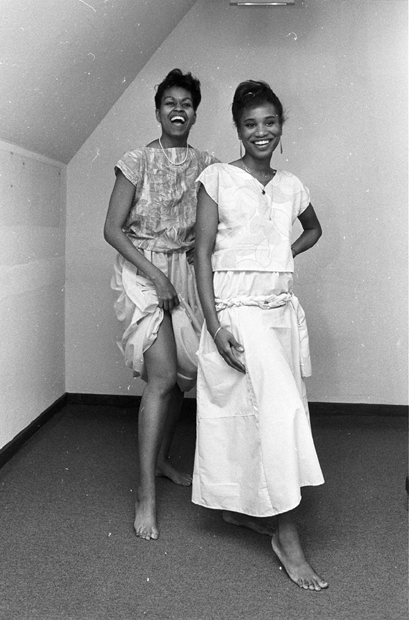
Striking the pose: At Princeton in February 1985, Michelle Robinson (at left), then a senior, modeled student-designed fashions along with fellow student Kim Battle for a story in the Newark Star-Ledger.

Many years later as First Lady, Michelle Obama demonstrates the same innate sense of style as she greets sailors at the Norfolk Naval Station in July 2009.
This, I think, is another reason why so many women are drawn to the style of the woman in the White House. Ive tried in this book to trace the role Michelle Obamas innate sense of style played in her journey from the South Side of Chicago to Princeton to that dizzying inaugural morning when she appeared before the world as an almost shockingly sudden new icon of style. What the world saw in January 2009, and many Americans had first glimpsed at the Democratic National Convention in the summer of 2008, was already evident when the future First Lady was a student at Princeton University in the early 1980s. When a small group of black women students at the university decided to put on a fashion show of clothes theyd sewn themselves, the first person they asked to model was a statuesque junior then known as Michelle Robinson. As a student she didnt wear anything trendysome of her sleeveless dresses were remarkably similar to clothes she wears now in the White Housebut she carried herself with an athletic ease and grace and seemed to have an implicit understanding of Coco Chanels famous dictum: Dress shabbily and they notice the dress; dress impeccably and they notice the woman.
Now in the White House, Michelle Obama is using her self-possessed style to set the tone and to define a new etiquette of power. She represents in many ways the fulfillment of the dreams millions of mothers and grandmothers had for their daughters. She seems remarkably unintimidated by traditions that have subjugated women for centuries. Shes not afraid her dignity might be compromised by a barefoot dash across the White House lawn. Shes not worried about some scandalous breach of protocol when she spontaneously touches the Queen of England. She has reached out to touch women from many different backgrounds, high and low, rich and poor; women of many ethnicities and creeds. Her gospel generally falls along the lines of empowering women for what they might make of their lives. It is a gospel that is rooted in the substance of style, a gospel that defines style as knowing who you are and being unafraid to show it to the world.


